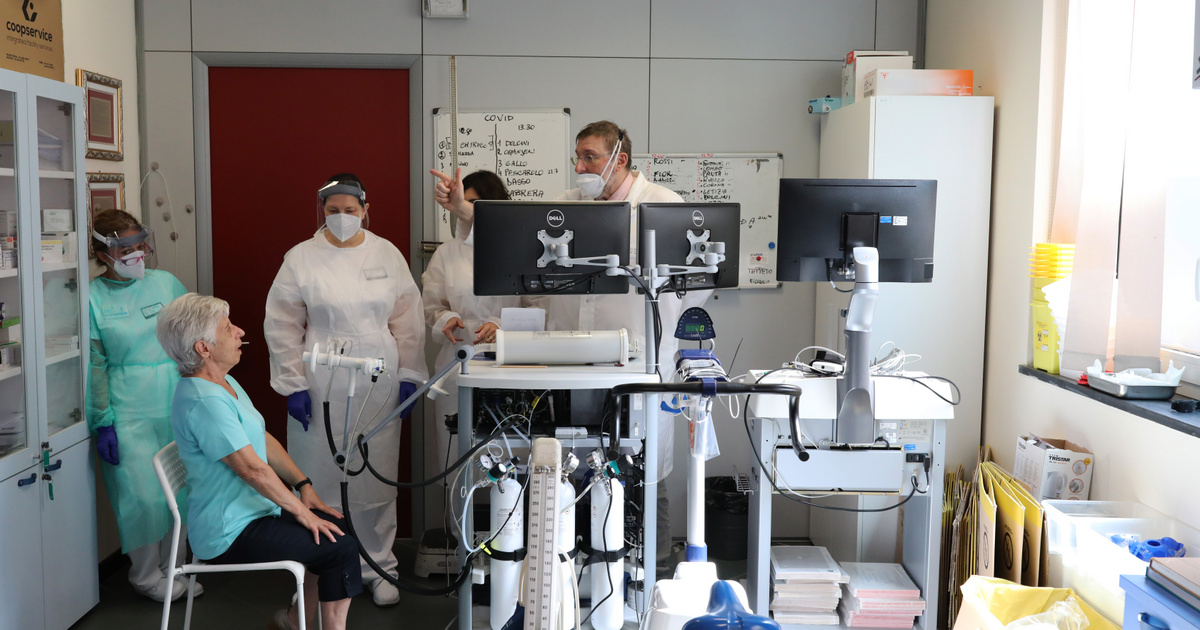More and more scientific papers are being published on the long-term complications of Covid. Recently, four other studies have been published, one of which is
She reported more than two hundred complications.
Feeling the weight of it, President Biden is trying to prevent discrimination against patients with long-term complications with Covid’s latest measure, the Americans with Disabilities Act, his speech marking the 31st anniversary of the passage of the American Disability Act.
Of the four studies mentioned above, the first study included a total of 3,726 patients from 56 different countries.
The main results are as follows:
- Patients reported 203 different symptoms that persisted for more than 28 days and affected ten organ systems.
- 66 of the symptoms persisted for more than seven months.
- Patients reported an average of 56 presentations.
- 91 percent of patients required 35 weeks to fully recover.
- The most common complaints were fatigue (98.3%), cognitive impairment (85%), visual hallucinations, tremors, itching, menstrual disturbances, sexual problems, fast heartbeat, blurred vision, diarrhea, tinnitus, memory problems, and urinary tract problems. Urinary tract, which persists. In most patients for six months.
- Nearly a quarter of the participants became unable to work due to the severity of the symptoms.
test is Clinical Medicine Athena Akrami, a neuroscientist at University College London, urged the development of new clinical methodological letters and professional guidelines.
We are just beginning to understand the problem, but we already know that its effect is extraordinary
– This was actually done by Dr. Francis Collins, the prestigious National Institutes of Health, current President of the US National Institutes of Health and former head of the Human Genome Project he added.
second study
The second study, which summarized and addressed the results of 27 previous smaller studies, yielded frighteningly similar results. all this a Journal of the Royal Society of Medicine Published in his communication d. Led by Lee Eggbos of Birmingham, England.
This group of authors also found that severe chronic fatigue was the most common problem, often accompanied by persistent fever, choking, gastrointestinal pain, muscle aches, headache, cough, chest pain, changes in taste and smell, and joint pain. They also found that cognitive disturbances, rapid heartbeat, forgetfulness and sleep disturbances are common. The authors noted that the presence of long-term symptoms could be expected mainly by those with five or more symptoms in the acute phase, regardless of age and gender. Permanent incapacity to work was also common in the second study.
This is what a third study says
The third study was published in the Epic Health Research Network and drew similar conclusions to the two above based on a study of nearly seven hundred thousand (!) patients. Here, too, a significant proportion of patients was found to report symptoms lasting from four to six months, which were essentially similar to those described above, and occur most often among those requiring hospitalization at the onset of the disease.
Fourth study A British Journal of Ophthalmology Posted in Communications. In this study, the authors focused primarily on ophthalmic and nervous system symptoms and found that nearly half of patients had neurological disorders even after three months. Corneal damage has also been reported in a significant proportion of patients.
How surprising is all of this? number!
This is not surprising to those who have worked on this topic for a long time: similar symptoms and even similar recurrences have previously been reported in scientific publications by Sars-CoV and Mers-CoV, as well as in the context of the SARS epidemic and MERS. in 2003 and 2012. However, these viruses are not as prevalent as they are today. Although infections were more common than Covid, these viruses have not spread as quickly as they do today. Far fewer people have been infected in a much smaller area, far from Europe and America, so this thing hasn’t gotten as much attention as the ongoing pandemic. Of course, there was no Facebook or Twitter at the time.
The author of the article is a specialist in allergy and immunology, and emeritus university professor.
(Cover photo: A rehabilitation center examines a patient with complications from the coronavirus on July 23, 2020. Photo: Marco De Lauro/Getty Images)






